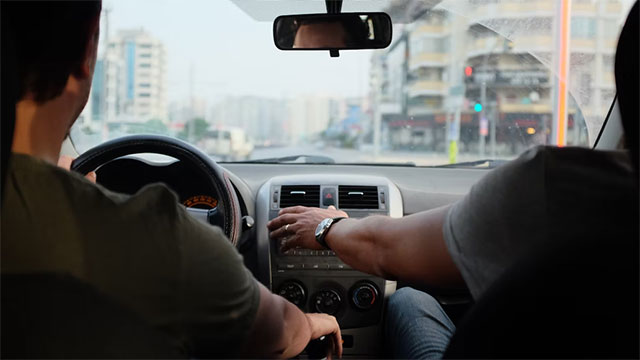At last, you’ve turned 16 and can finally sit for your driving test. Learning to drive is an exciting time, but it can also be a little daunting. Being a perfect driver takes time, practice, and patience. In addition, there are several key things you need to keep in mind while learning to drive.
Table of Contents
Tips on Learning How to Drive

Being a perfect driver takes a lot of time, daily practice, and patience. In this blog, you will learn the 13 most important tips on learning how to drive.
1. Get to know your car
Before you start driving, it’s important that you feel comfortable and confident in your vehicle. So sit in the driver’s seat and get familiar with all the controls – where the indicators are, how to use the windscreen wipers, where the lights are located etc. Once you know where everything is, you can focus on driving without worrying about fumbling around for controls.
2. Know the basics of car maintenance
It’s not just enough to know how to drive – you should also have a basic understanding of how to keep your car in good working order. This means knowing how to check your oil level, tire pressure, and water levels. If you’re unsure how to do these things, ask a friend or family member familiar with cars to show you.
3. Don’t tailgate
Tailgating – driving too close to the car in front of you – is one of the most common causes of accidents. It gives you less time to react if the vehicle in front of you suddenly brakes, and can lead to a nasty rear-end collision. So, always leave plenty of space between you and the car in front.
4. Use your signals
Using your indicators is vital when driving – it lets other drivers know what you’re planning to do so that they can adjust accordingly. Always indicate when you’re going to turn or change lanes and cancel your signal after completing the maneuvers.
5. Obey the speed limit
Speeding is one of the leading causes of accidents, so you must always obey the posted speed limit. Even if there’s no one else around, it’s still not worth the risk of going too fast.
6. Always wear seatbelts
Seatbelts are one of the most important safety features in a car and can save your life in an accident. So, wear a seatbelt every time you get in the car—no matter how short the drive may be.
7. Use your mirrorsand look over your shoulder—before changing lanes
One of the most important things to do while driving is to check your blind spots before changing lanes. Mirrors can help with this, but it’s also a good idea to turn your head and physically look over your shoulder to make sure there’s no one in your blind spot.
8. Be extra careful in school zones and around buses
School zones and areas around buses can be hectic, so it’s important to drive slowly and carefully in these areas. Keep an eye out for children who may dart into the street, and be prepared to stop if a bus is signaling that it’s about to let passengers off.
9. Don’t drive if you’re tired
Driving while sleepy is incredibly dangerous. If you’re getting drowsy behind the wheel, pull over and take a short nap or grab a cup of coffee. It’s not worth risking your life (or the lives of others) by driving when you’re exhausted.
10. Don’t get distracted
Distracted driving is one of the leading causes of accidents, so staying focused while behind the wheel is important. That means no cell phones, no eating, and no fiddling with the radio. Pull over and stop first if you need to do any of those things. Finally, and most importantly, don’t drink and drive. It goes without saying that drinking and driving are a dangerous combination. If you’ve had even a tiny amount of alcohol, it’s best to hand over the keys to someone else.
11. Listen to your instructor
Your driving instructor knows what they’re doing, so it’s important to listen to them and do as they say. Trust that they’re teaching you everything you need to know to be a safe driver.
12. Study the theory again
After you’ve completed your driving lessons, it’s a good idea to go over the theory again so that you can refresh your memory. This will help you remember the important information and concepts you learned during your lessons.
13. Get plenty of practice
Learning to drive is a process; getting comfortable behind the wheel takes time. So, ensure you get plenty of practice in different conditions before taking your test. Once you have your license—don’t be afraid to keep practicing – there’s always room for improvement. For example, you can take various driving tests online to help you brush up on your skills. If you happen to be residing in Saudi Arabia and learning to drive in the kingdom, you can check this practice site for additional resources.
Conclusion
The most important fundamental thing to learning how to drive is practicing as much as possible. The more you practice, the more comfortable you’ll become with the process, and the better your chances of passing your driving test.
Last but not least, another invaluable thing when learning to drive is to be patient. Learning to drive can be a stressful experience, but it is important to remain calm and collected while behind the wheel. It takes time to learn all of the skills necessary to operate a vehicle safely, so be patient and give yourself plenty of practice before taking your driving test.
Then, once you have passed your test, continue to brush up on your skills by taking refresher courses and staying up-to-date on the latest driving laws and regulations. By remaining a safe and responsible driver, you’ll enjoy the freedom and independence of owning a car.
So get out there and start logging some hours behind the wheel!













